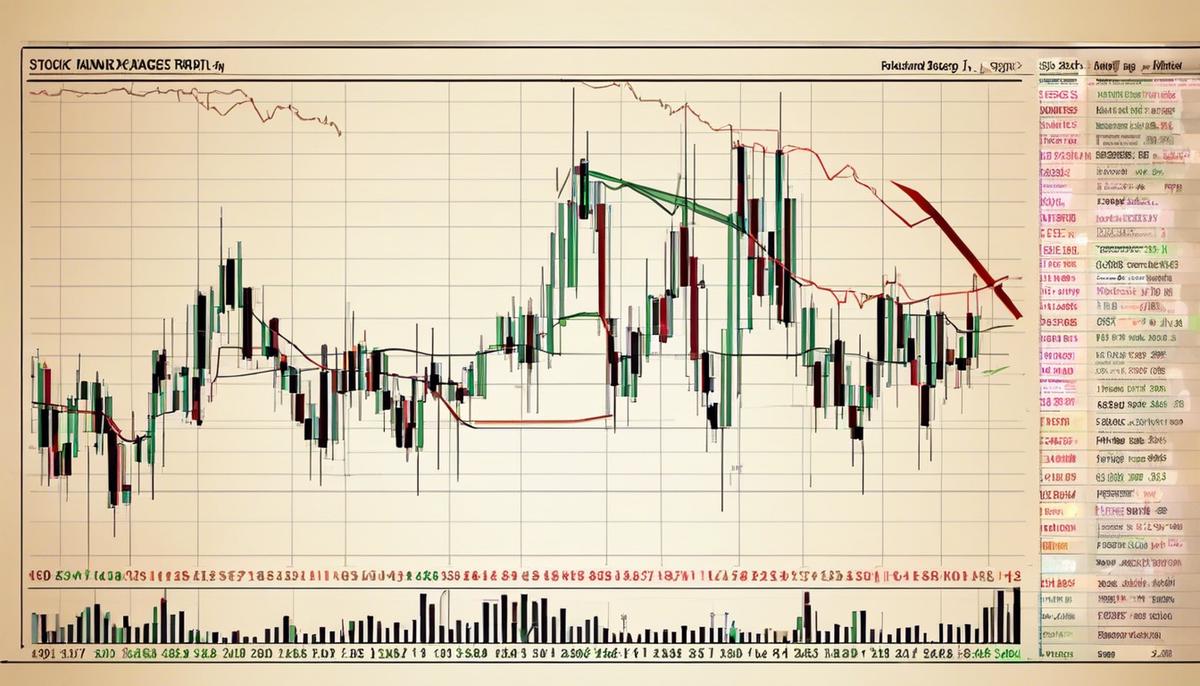In the pursuit of financial growth and independence, one of the crucial areas that offer enormous opportunities is the stock market. Investing in this market, however, calls for more than just the purchasing power – it demands a keen understanding of the basics, a seasoned eye for evaluating potential investment options, an informed insight into the current market trends and economic conditions, and a well-articulated strategy for risk management. This exploration invites us into the world of stock market investing, as we demystify its intricacies—from grasping the basic concepts of stocks and their exchange to comprehending the fundamentals of company evaluation and recognizing the importance of economic indicators. Furthermore, we delve into the importance of a robust investment strategy and how best to manage potential risks.
Understanding the Stock Market Basics
Foundations of Knowledge: Empowering Novice Investors with Profitable Trading strategies
The fast-paced world of investment and stock trading tends to weave an intricate web of volatility and opportunity. Aspiring investors, pedaling swiftly towards the enticing world of stock trading must ensure they possess an unshakeable foundation of knowledge. This sturdy groundwork will not only facilitate adept navigation through the constantly changing tide of stock market dynamics but also provide the confidence necessary for successful trades.
Understanding the Market Environment
First and foremost, exploring the stock market universe without a comprehensive understanding of its unique environment is akin to setting sail without a compass. Thus, novice investors should familiarize themselves with the basic principles of stock trading. Comprehending terms such as bulls and bears, initial public offerings, dividend payments, and understanding stock indices like the Dow Jones Industrial Average and S&P 500, serve as the preliminary stanchions of this foundation.
Economic Indicators and Their Influence
Furthermore, recognizing and interpreting economic indicators – inflation rates, gross domestic product, and unemployment rates – can provide significant insights into the overall economic health of a country. This knowledge can enable investors to discern potential market fluctuations and adapt their investment strategies accordingly.
Risk Management Strategies
Another sentinel of successful trading lies in the effective implementation of risk management strategies. Realizing that all investments come with their degree of risk, and understanding how to diversify investment portfolios to mitigate these, can safeguard against unexpected financial pitfalls.
Fundamental and Technical Analysis
Next in line for this extensive learning curve is mastering the art of fundamental and technical analysis. Whereas fundamental analysis involves dissecting financial statements, analyzing industry trends, and assessing macroeconomic factors, technical analysis focuses on price patterns, trading signals, and statistical trends within stock charts. The harmonious balance of both these analytical styles has often been the key to unlocking profitable trading opportunities.
Emotional Intelligence
In the furnace of the trading floor, emotional discipline frequently makes the difference between success and failure. Emotional intelligence in trading refers to the mastery of emotions while making financial decisions. It might seem abstract, but panicking in downtrends or getting euphoric in uptrends can trigger irrational decisions, impairing investments.
Engaging With a Professional Network
LastlY, harnessing the potential of a professional network promotes exposure to expert opinions, emerging trends, and innovative investment strategies. Participation in financial seminars, online investment communities, and keeping abreast with reputable financial reports can aid in forging a well-rounded investment outlook.
In conclusion, building a robust foundation for stock trading is not solely about mastering technical knowledge, but it’s an enriching process of learning, experimenting, adapting, and yes, sometimes failing. Investing in this groundwork of knowledge can empower novice investors with the armor required for profitable trading, catapulting them towards their financial goals with conviction and aptitude.

Evaluating Companies for Investment
Forging Worthy Investments: A Guide to Developing A Keen Eye for Stocks
While understanding the stock market environment lays the groundwork for investing in stocks, and economic indicators, risk management, fundamental and technical analysis, emotional intelligence, and networking can further equip investors, these elements alone do not complete the investing puzzle. To hone the savvy investor’s intuition that characterizes those with a tangible success rate in stock trading, a few additional tactics come into play—particularly, infusing innovation, staying on top of business trends, and targeting market needs.
Talk about an add-on to risk management strategies, innovation in investing doesn’t merely involve cutting-edge technology or the latest investment software. It also encompasses the novel approach that investors adopt towards selecting worthwhile stocks. Essentially, the investor’s antidote to potential stagnation, a rich vein of innovation, is what separates the remarkable from the run-of-the-mill. The trick lies in challenging traditional norms and thinking beyond traditional portfolios, venturing into uncharted territories of investment options, opening up fresh avenues of potential profitable niches.
A knack for identifying and riding on business and economic trends elevates the conventional stock investment game. Industries do not operate in isolation, and as such, an investor’s intrinsic ability to tap into these trends can lead to sound investment choices. For instance, the current drive toward green practices has put environmentally-friendly corporations in the spotlight – a trend savvy investors are keeping a sharp eye on. Simultaneously, emerging markets often offer growth rates far superior to those mature counterparts. Spotting these developing trends can yield substantial returns for the observant investor.
Underlying all these strategies, one undeniable aspect remains: the sharp focus on market needs. No matter how excellent a company’s offering is, if it’s not serving a market need, its potential for growth diminishes. As such, investors should extend their research beyond the obvious, digging into the market’s underlying needs and the companies striving to satisfy them. Analyzing this aspect alongside stock value can offer investment opportunities that show promise of high growth and returns.
Moreover, the world is shrinking into a global village where borders are no longer barriers. Keeping this in mind, the savvy investor broadens their perspective by venturing beyond local stocks. Global investment opportunities can provide a richer diversity, safeguarding against local market volatility and potentially providing stronger returns.
Finally, the core of all these strategies lies in continuous learning and linking knowledge across industries. The business savvy within every investor should remain curious, make connections, observe patterns, and continually expand their comparative arsenal.
In closing, every investor must forge their unique approach, colored by a blend of careful study, connecting the dots across various industries, understanding emerging trends, and an innovative mindset. It’s not just about “buying low and selling high”—it’s about creating a comprehensive picture of the stock market to decide where and when to invest. This multi-faceted approach can help investors develop that keen eye for worthy stocks.

Market Trends and Economic Conditions
Market trends and economic conditions command a significant influence when electing to buy stocks. The befitting role they play is multi-dimensional, as markets themselves are never one-dimensional – they are living, breathing entities that deviate and adjust continuously. Timing the market with the requisite precision isn’t a skill masterfully wielded by many, necessitating a deep-rooted understanding of these trends and conditions to capitalize on investment opportunities.
Strategically engaging the stock market signifies understanding how market trends guide stock performance. A market trend steadily upswing indicates a bull market, usually a ripe sphere for prospective investors. This market condition suggests that buyers’ confidence is in-charge and a symbol that firms are performing well. On the contrary, downward trends or bear markets augur potential hesitations for acquisitions, as sell-offs indicate lack of investor trust and paints a gloomy picture of corporations performing below par.
Emphasizing the significance of market trends, they inject the market with a sense of rhythm and flow, almost like a dancer on an investment floor synchronizing with the music of an economic orchestra. The mastery lies not just in identifying these trends, but to adapt and align accordingly, a trait distinguishing successful entrepreneurial investors from the rest of the pack.
Given that economic conditions are crucial bellwethers of stock market performance, paying heed to these indicators can provide valuable insights into prospective stock buys. Consider inflation rates – a high inflation rate can plummet investor sentiments, pushing down the stock prices. Herein lays an opportunity – good stocks may occasionally become cheap in these circumstances, and if timed well, can turn out to be profitable buys. This exemplifies the innovative thinking necessary in dealing with market intricacies.
On a broader view, emerging markets expose untapped opportunities – and a fair share of risk. The hunt for the next ‘big thing’ can often tip investors towards these markets. However, careful, critical understanding of the economic conditions guiding these markets is fundamental before diving headfirst into these unpredictable waters.
Global trends also impact the decision to buy stocks. For instance, when the world started shifting towards digitalization, investors keeping abreast of this shift invested in tech companies. Fast forward to today, these companies are some of the biggest players on the stock market. These global trend adjustments shed light on potential sectors to invest in, reinforcing the point made earlier – a successful entrepreneur is a master networker and trend-spotter, one who connects the dots painting an investment picture across a global canvas.
Diving into the intricacies of stock buying, knowledge is power, and in this case, profit. Seasoned investors recognise that industries have interplaying factors, affecting one another indirectly. This drives ‘knowledge linking’ among industries, providing a comprehensive market panorama for the entrepreneurial investor.
Finally, the entrepreneurial savvy investor knows there is no cookie-cutter approach to investing. Developing a unique method, customized to individual knowledge, risk tolerance, and investment goals, is significant to navigate the vast investment ocean. The game is complex, dynamic, and demands a tailored strategy to win.
But then again, isn’t that what business is all about – meticulously crafting strategies designed to overcome challenges, seize opportunities, and ultimately emerge victorious? Only in this context, victory bears a sweet fruit – a profitable stock portfolio.

Investment Strategy and Risk Management
In the elaborate grandeur of investment, experienced investors oftentimes initiate a concerted effort to construct and administer a risk-adjusted portfolio. Undertaking such a task embodies profound understanding coupled with a delicate use of diverse investment tools and a keen eye for identifying proportional risks and returns. As we stride forward into this subject, bear in mind that the initial phase of this piece has effectively explored various indispensable concepts such as understanding the stock market environment, the role of economic indicators, and the principle of risk management among others. This part will delve further into crucial tactics for portfolio construction and risk management, underpinned by the unique angle of market-centered innovation and globalized perspective.
When an investor embarks on the journey of creating a risk-adjusted portfolio, diversification is a cardinal rule. A well-diversified portfolio will typify a variation of asset classes and sectors, offsetting potential losses from any one area with potential gains in another. It may entail stocks, bonds, commodities, real estate or even cryptocurrencies – each unique in their returns, and their risks. The central idea here is that a well-diversified portfolio will be able to weather market volatility with greater strength and resilience.
In parallel, the application of modern portfolio theory (MPT) is another potent tool. It delves deeper into the waters of diversification and speaks to not just owning a variety of assets, but specifically owning assets that are not positively correlated. When one zigs, the other zags, creating a balance.
As investors construct these portfolios, however, it’s crucial not to lose sight of individual investment goals. Are they seeking to build wealth for early retirement, save for a child’s college fund, or accumulate wealth for a dream home? Aligning investment decisions with these personal goals leads to a holistic and personalized investment strategy.
Then, we inherently arrive at the topic of rebalancing. Over time, certain investments may outperform others, causing the original asset allocation to drift. Regular rebalancing will ensure the portfolio stays aligned with the investor’s desired risk-level, bringing it back in line with the individual’s investment goals and risk tolerance.
Finally, continuous monitoring is essential for a well-managed, risk-adjusted portfolio. Comprehensively tracking the performance of individual assets and the portfolio as a whole allows for adjustments as needed. It provides insight into any early warning sign of potential risks whereby effective actions can be taken promptly.
With these strategies at hand, investors can create a robust and resilient portfolio. However, it’s crucial to remember that there is no one-size-fits-all investment strategy that can guarantee success. The wagon of investment is ceaselessly moving forward, and savvy investors adapt, improvise, and innovate, always fuelled by the passion to make more informed decisions and offering versatile strategies that best fit their objectives and risk appetite.

The world of stock investing, while riddled with potential risks, also harbors a wealth of opportunities for those well-equipped with relevant knowledge and informed strategies. A diligent understanding of stocks, along with a discerning eye for evaluating companies, is crucial for anyone looking at venturing into this dynamic financial arena. Similarly, an informed awareness of market trends and economic conditions, especially during times of volatility, can guide investment decisions in a way that bolsters chances for substantial returns. Ultimately, a sound investment strategy not only amplifies the prospects for profitable investments but also equips an investor to sail smoothly amidst a sea of potential risks. After all, stock investing, just like any other financial endeavor, shouldn’t be a shot in the dark—it should be a calculated move designed to illuminate the pathway to financial growth.


